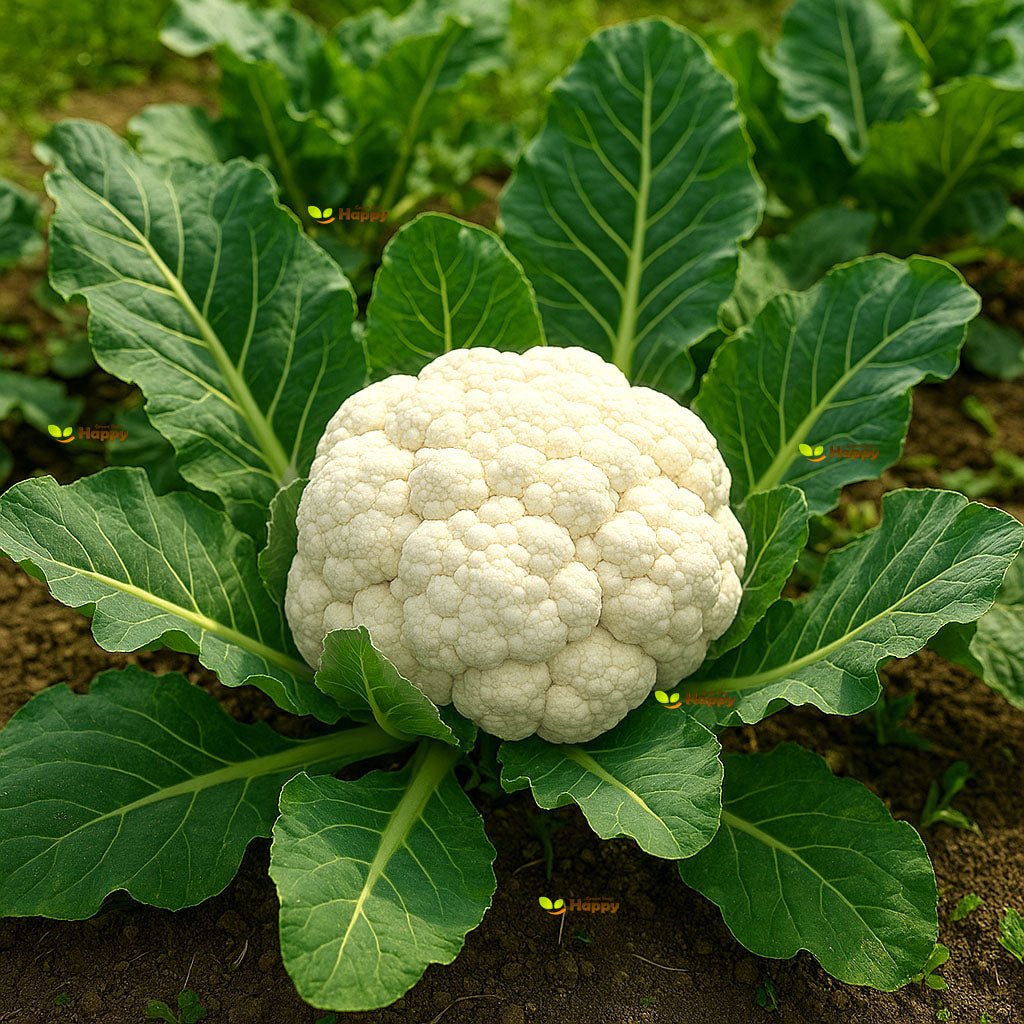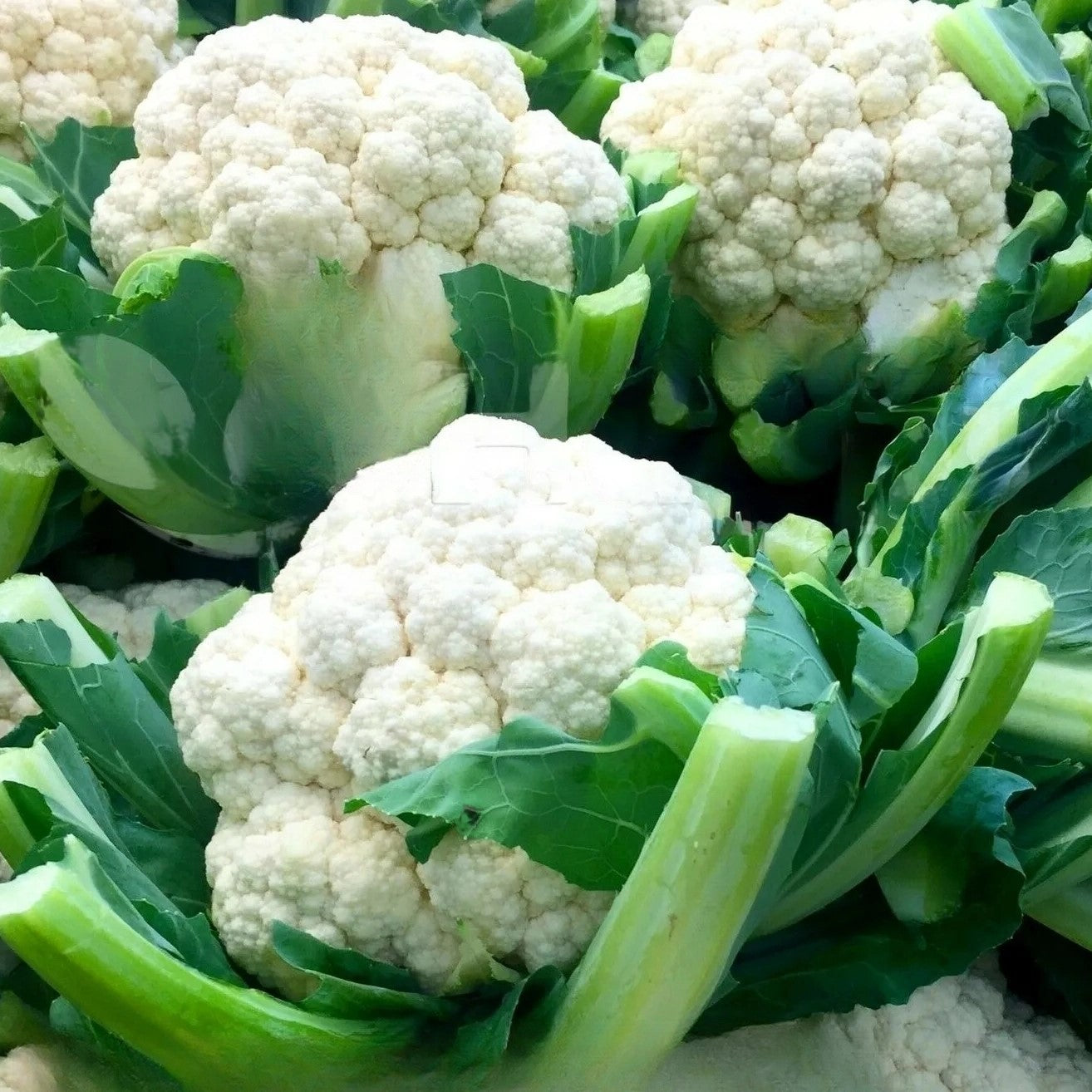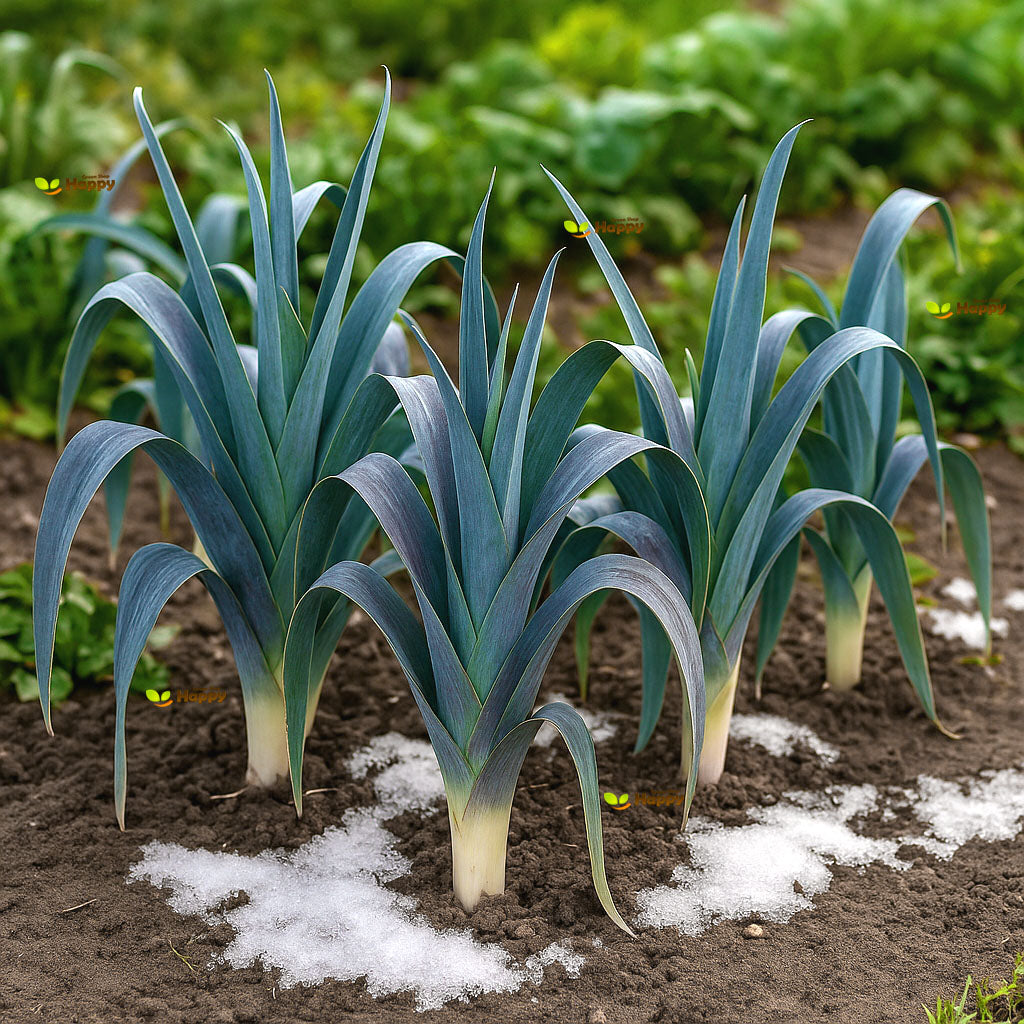Sort by:
51 products
51 products
Cauliflower ‘All The Year Round’ – Seeds (Brassica oleracea)
Description:
Enjoy reliable harvests with Cauliflower ‘All The Year Round’ (Brassica oleracea), a versatile and hardy variety suitable for spring, summer, and autumn cropping. It produces compact, white heads with excellent flavor and texture, ideal for steaming, roasting, or use in soups and casseroles. Easy to grow from seed, this dependable cauliflower performs well in most soils and weather conditions, making it perfect for home gardens and allotments.
Key Features
-
Reliable, hardy variety for multiple seasons
-
Compact, firm white curds with great flavor
-
Suitable for spring, summer, and autumn harvests
-
Tolerant of varying weather conditions
-
Easy to grow from seed
Ideal For
-
Home and kitchen gardens
-
Allotments and vegetable plots
-
Fresh cooking, freezing, and preserving
-
Year-round vegetable production
Sowing & Growing
-
Sow Indoors: January–April
-
Sow Outdoors: March–June
-
Transplant Outdoors: April–July
-
Germination: 7–14 days at 15–20°C
-
Spacing: 45–60 cm apart
-
Light: Full sun
-
Soil: Fertile, firm, well-drained
Care Tips
-
Water regularly, especially during dry periods
-
Protect young plants from pests and frost
-
Add compost or organic matter before planting
-
Harvest when heads are firm and white
Cauliflower 'Octavian' – Seeds (Brassica oleracea)
Cauliflower 'Octavian' is a reliable mid-season variety producing large, firm, creamy-white heads with a mild, delicate flavor. Ideal for steaming, roasting, soups, and gratins, it is a versatile addition to any vegetable garden.
This hardy variety performs well in a range of soils, offers excellent disease resistance, and is suitable for home gardens, allotments, and small-scale cultivation.
How to Grow
-
Sow indoors: February – April
-
Transplant outdoors: April – June
-
Depth: 0.5–1 cm
-
Spacing: 40–50 cm between plants, rows 60–70 cm apart
-
Position: Full sun, sheltered from strong winds
-
Soil: Fertile, well-drained, rich in organic matter
-
Watering: Keep soil consistently moist for optimal head development
Key Features
-
Mid-season cauliflower with large, firm, creamy-white heads
-
Mild, tender flavor suitable for steaming, roasting, soups, and gratins
-
High-yielding and reliable growth
-
Excellent disease resistance
-
Ideal for home gardens, allotments, and small-scale cultivation
Harvest
-
Harvesting period: July – September
-
Harvest heads when compact and firm to ensure the best flavor and texture.
Short Tip
Blanch the heads by folding outer leaves over them to maintain whiteness and protect from sunburn.
Cucumber White Wonder – 50 Seeds (Cucumis sativus) Rare
Cucumber White Wonder is a rare and unique cucumber variety, producing crisp, pale white fruits with a sweet, mild flavor. Its unusual color and tender texture make it a standout for fresh salads, pickling, and gourmet presentations. Fast-growing and productive, this variety thrives in sunny garden beds or containers, perfect for gardeners seeking something extraordinary.
Key Features
-
Fruit Color: Pale white
-
Flavor: Sweet, mild, and crisp
-
Growth Habit: Vigorous, climbing or trailing
-
Maturity: 50–60 days
-
Use: Fresh salads, pickling, and culinary presentation
-
Yield: High and consistent
Ideal For
-
Home vegetable gardens
-
Container and balcony growing
-
Gourmet and specialty cooking
-
Rare and unusual garden collections
Sowing & Growing
-
Sow indoors: February–April
-
Transplant outdoors: After last frost
-
Spacing: 50–60 cm
-
Position: Full sun, fertile well-drained soil
-
Care: Provide trellis support; water consistently
Beetroot 4 Colors – 100 Seeds (Beta vulgaris)
Beetroot 4 Colors is a vibrant mix of red, golden, pink, and striped beets, bringing color and nutrition to your garden. These fast-growing, tender roots are perfect for fresh salads, roasting, pickling, and juicing. Easy to grow and versatile, this mix is ideal for both beginner and experienced gardeners looking to add variety and flavor to their harvest.
Key Features
-
Variety: Red, golden, pink, and striped beets
-
Growth Habit: Compact and fast-growing
-
Maturity: 50–60 days
-
Use: Salads, roasting, pickling, and juicing
-
Flavor: Sweet and earthy
-
Harvest: Can be harvested young as baby beets or fully mature
Ideal For
-
Vegetable garden beds
-
Container growing
-
Colorful salads and culinary use
-
Home gardeners seeking variety
Sowing & Growing
-
Sow outdoors: March–July
-
Depth: 1–2 cm
-
Spacing: 10–15 cm
-
Position: Full sun to partial shade
-
Soil: Fertile, well-drained soil
-
Care: Keep soil moist; thin seedlings for optimal root development
Tomato Mix – 100 Seeds (Solanum lycopersicon)
Tomato Mix offers a vibrant variety of heirloom and hybrid tomatoes, producing fruits in different shapes, sizes, and colors. Perfect for home gardeners, this mix delivers a continuous harvest of flavorful, juicy tomatoes suitable for fresh salads, sauces, and cooking. Compact and vigorous, these plants thrive in sunny garden beds, greenhouses, or containers.
Key Features
-
Variety: Mixed heirloom and hybrid tomatoes
-
Growth Habit: Indeterminate and determinate plants
-
Fruit Color: Red, yellow, orange, and green variations
-
Use: Fresh eating, cooking, sauces, and canning
-
Yield: High-yielding and continuous harvest
-
Flavor: Sweet, rich, and full-bodied
Ideal For
-
Vegetable garden beds
-
Container or greenhouse growing
-
Fresh salads and culinary use
-
Home-grown tomato enthusiasts
Sowing & Growing
-
Sow indoors: February–April
-
Transplant outdoors: After last frost
-
Spacing: 40–60 cm
-
Position: Full sun, fertile well-drained soil
-
Care: Water regularly and provide support for taller varieties
French Mixed Salad – 1000 Seeds (Lactuca sativa)
French Mixed Salad is a versatile, easy-to-grow lettuce mix ideal for fresh, homegrown salads. This collection offers a variety of leaf shapes, colors, and textures, creating a visually appealing and flavorful mix for everyday meals. Fast-growing and tender, it is perfect for cutting and continual harvests throughout the season.
Key Features
-
Variety: Mixed leaf types and colors
-
Growth Habit: Loose-leaf, fast-growing
-
Maturity: 40–60 days
-
Flavor: Mild, tender, and crisp
-
Use: Fresh salads, garnishes, and sandwiches
-
Harvest: Cut-and-come-again for continuous picking
Ideal For
-
Home vegetable gardens
-
Container and balcony growing
-
Continuous harvest for fresh salads
-
Mixed salad bowls and culinary use
Sowing & Growing
-
Sow outdoors: March–August
-
Depth: 0.5–1 cm
-
Spacing: 15–20 cm
-
Position: Full sun to partial shade
-
Soil: Fertile, well-drained soil
-
Care: Keep soil consistently moist for tender leaves
Sweet Pepper ‘Poupila’ – 50 Seeds (Capsicum annuum)
Sweet Pepper ‘Poupila’ is a high-yielding, early-maturing variety producing medium-sized, glossy red peppers. Known for its sweet, mild flavor, this versatile pepper is perfect for fresh salads, roasting, stuffing, or cooking. Compact and robust, it thrives in sunny gardens or containers, making it ideal for both beginner and experienced gardeners.
Key Features
-
Fruit Color: Red when mature
-
Flavor: Sweet, mild, crisp
-
Growth Habit: Compact and bushy
-
Days to Maturity: 60–70 days
-
Use: Fresh, cooked, roasted, or stuffed
-
Yield: Heavy and consistent
Ideal For
-
Garden beds and containers
-
Fresh eating and culinary use
-
Small-space or balcony gardens
Sowing & Growing
-
Sow indoors: February–April
-
Transplant outdoors: After last frost
-
Spacing: 30–40 cm
-
Position: Full sun, fertile well-drained soil
-
Care: Water regularly; remove side shoots to encourage larger fruit
Pink Thai Egg Tomato – Seeds
(Solanum lycopersicum)
Pink Thai Egg Tomato is a rare heirloom variety from Thailand known for its egg-shaped, rose-pink fruits and exceptional productivity. The smooth, glossy tomatoes grow in clusters and have a sweet, mild flavor with low acidity, making them perfect for fresh salads, salsas, and light cooking. Compact and hardy, this variety thrives in both warm and temperate climates.
Key Features
-
Fruit Shape: Small, egg-shaped
-
Color: Pink to rose-red
-
Flavor: Mild, sweet, and low-acid
-
Growth Habit: Indeterminate
-
Days to Maturity: 70–80 days
-
Yield: Heavy cropper with clusters of uniform fruits
Ideal For
-
Greenhouses, gardens, and containers
-
Fresh eating and gourmet dishes
-
Heirloom and specialty tomato collections
Sowing & Growing
-
Sow indoors: February – April
-
Transplant outdoors: After last frost
-
Harvest: July – October
-
Spacing: 45–60 cm apart
-
Position: Full sun, sheltered
-
Soil: Rich, well-drained compost
Care Tips
-
Support with stakes or cages for best yield.
-
Water regularly and feed with tomato fertilizer once flowering begins.
Carrot ‘Chantenay’ – Seeds
(Daucus carota)
Carrot ‘Chantenay’ is a classic, reliable variety producing short, broad, conical roots with a rich orange color and sweet, crisp flavor. Ideal for heavy or shallow soils, this variety performs well where longer carrots might struggle. Perfect for fresh eating, juicing, or roasting, ‘Chantenay’ carrots are a trusted favorite for gardeners and cooks alike.
Key Features
-
Type: Maincrop carrot
-
Root Shape: Short, conical
-
Color: Deep orange
-
Flavor: Sweet, tender, and full-bodied
-
Days to Maturity: 70–85 days
-
Soil Tolerance: Performs well in heavier or shallow soils
Ideal For
-
Kitchen gardens and allotments
-
Containers and raised beds
-
Fresh use, cooking, and juicing
Sowing & Growing
-
Sow outdoors: March – July
-
Harvest: June – October
-
Spacing: Thin to 5–8 cm apart
-
Depth: 1 cm
-
Position: Full sun
-
Soil: Loose, well-drained, stone-free
Care Tips
-
Keep soil moist for even germination.
-
Thin seedlings early to avoid crowding.
-
Avoid fresh manure to prevent root forking.
Showing 18/51













